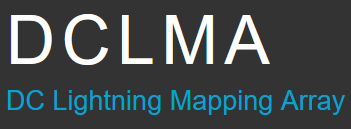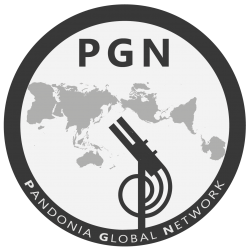networks
The Howard University Beltsville Campus belongs to several local to global networks where data is collected and distributed to the public through their proper channels. These can be from GPS data to upper air measurements. Here are the networks that HUBC is part of, including one from the IRB building located at the main campus over downtown DC.
HUBC provides observation data and derived products for the Global Navigation Satellite Systems (GNSS) that serve as input for thousands of users world-wide in the field of Earth monitoring, navigation, timing, and various scientific applications.
HUBC is part of the District of Columbia Lightning Mapping Array (DCLMA) monitoring lightning around the region. The site offers from archive, current, animation, and Google Earth display to the status of the devices around the area, including HUBC.
The international Network for the Detection of Atmospheric Composition Change (NDACC) is composed of more than 110 globally distributed, ground-based, remote-sensing research stations and HUBC is one of them launching the Cryogen Frostpoint Hydrometers (CFH) year-round since 2012 to obtain profiles of water vapor, temperature, pressure, and winds from the surface to about 30km. Although not with regularity — these CFH measurements extend back to 2005. A majority of these soundings are accompanied with an ECC Ozonesonde and RS41.
The Global Climate Observing System (GCOS) Reference Upper-Air Network (GRUAN) is an international reference observing network of sites measuring essential climate variables above Earth’s surface, designed to fill an important gap in the current global observing system. HUBC contributes to GRUAN with weekly RS41, monthly CFH, monthly ozonesonde and GNSS data streams, as well as performs extra experimental testing of new CFH methods/instruments.
The Pandonia Global Network (PGN) provides real-time, standardized, calibrated and verified air quality data and associated uncertainty values using the Pandora instrument. HUBC has a Pandora installed on the roof top of the main building taking measurements constantly.
The Aerosol Robotic Network (AERONET) is a federation of ground-based remote sensing aerosol networks established by NASA and PHOTONS (Photométrie pour le Traitement Opérationnel de Normalisation Satellitaire) and is greatly expanded by networks and collaborators from national agencies, institutes, universities, individual scientists, and partners. Located on the roof of the Howard University Interdisciplinary Research Building (IRB), a new CIMEL Sunphotometer was installed and recording data as we speak.
The Maritime Aerosol Network (MAN), component of AERONET, provides ship-borne aerosol optical depth measurements from the Microtops II sun photometers. Since 2004, these instruments have been deployed periodically on ships of opportunity and research vessels to monitor aerosol properties over the World Oceans. HUBC is part of this network with the AEROSE campaigns taking place every other year.







